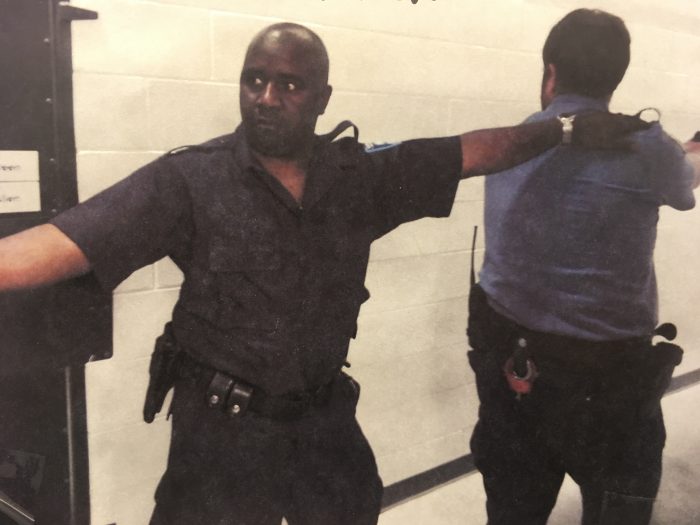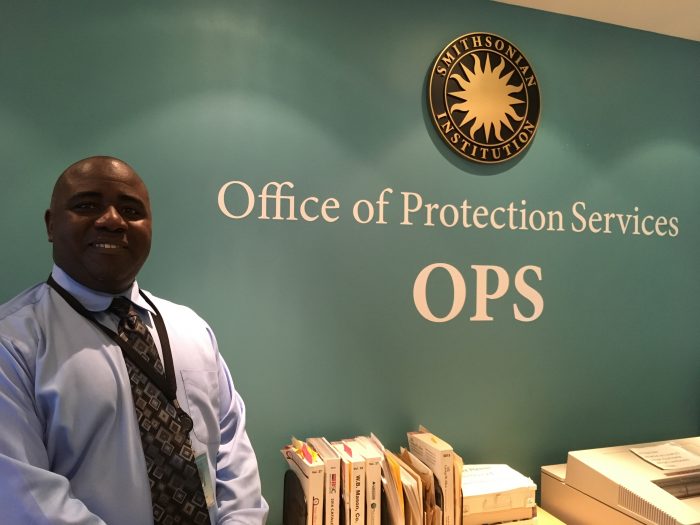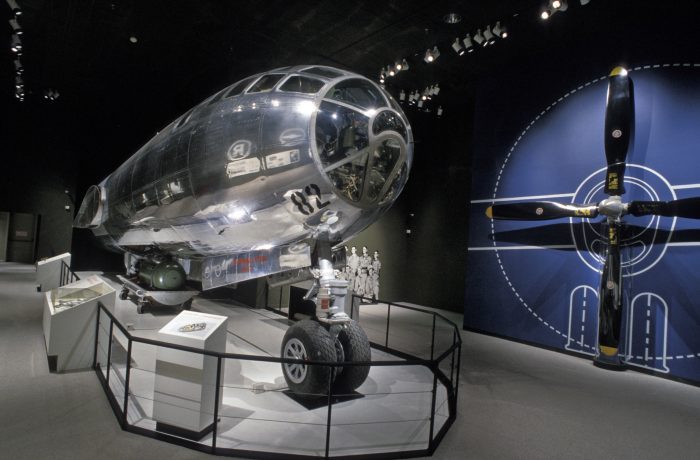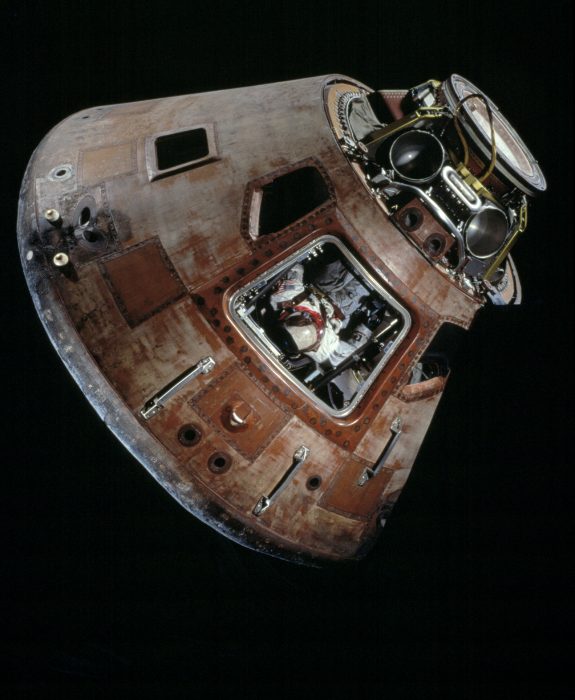A few of my favorite things: Robert McKinney
Smithsonian staff work countless hours in the halls of our museums and research centers, in the field, at the Zoo, in our gardens and facilities. We are privileged to spend time with some of the nation’s most cherished treasures as we go about our duties. Sometimes, these unique experiences find a special place in our own personal stories. Amy Kehs introduces Robert McKinney and a few of his favorite things.
Robert McKinney, District Manager in the Office of Protection Services, was a young college student at Bowie State University when he was bitten by the Smithsonian bug while working as a gallery attendant at the National Museum of American History in the mid-1980s. However, his college pursuits led him away from the Washington, D.C. area and to Voorhees College in Denmark, S.C. One day, he received a phone call offering him a fulltime job at the Smithsonian. He had loved working here: he loved his co-workers, the visitors and helping to protect the national collection. It was a tough choice but he decided to leave school and joined the Smithsonian fulltime in 1988. Today, he is responsible for the prestigious Honor Guard and oversees security at seven museums: the American Indian Museum in Washington and the Heye Center in New York; the Air and Space Museum on the National Mall and the Udvar-Hazy Center in Virginia; the Postal Museum; the Anacostia Community Museum; and the Cooper Hewitt Smithsonian Design Museum in New York.
Robert McKinney is part of my own Smithsonian work family. He and I worked together at the National Air and Space Museum 20 years ago and even though we only run into each other occasionally, when I See Robert it’s always as if we saw each other yesterday. He is a people person who always has a smile to share and a listening ear to lend. The people he encounters in his job—his co-workers, the visitors and even the occasional VIP, are always his top priority.
Most people I’ve asked find it difficult to come up with their “favorite three things” at the Smithsonian, but Robert had to work hard to winnow down his list. His favorite artifacts are touchstones for the stories of his career, growth and his work family. The stories he tells demonstrate that—that 30 years after that fateful phone call—it’s the people and collections he is sworn to protect that bring him to work each day.
One of Robert’s most memorable artifacts is the Enola Gay, the World War II B-29 Superfortress Bomber that dropped the first atomic bomb on Hiroshima in 1945. He remembers the plane’s first controversial exhibit at the Air and Space Museum as one of the first real challenges of his career. The Enola Gay is now completely assembled and on view at NASM’s Udvar-Hazy Center in Chantilly, Va., but in 1995 just its fuselage was on display in a first floor gallery in the downtown museum. Leading up to the opening, there had been a vociferous public debate over the exhibit’s focus. The security team at NASM knew that protests were likely. Robert McKinney, a sergeant at the time, participated in the preparation and planning to keep not only the artifact itself, but also visitors and staff safe. In July 1995, those skills and preparation were put to the test when protesters threw chicken blood on the aircraft. Robert and the rest of the security team at NASM were well prepared and handled the situation carefully and quickly. The airplane would be vandalized at least two more times before it was taken to the Hazy Center in 1998.
Another of Robert’s favorites is the Apollo 11 capsule that carried the first men to the moon in 1969. The capsule is now being refurbished and preparing for a national tour, but in 1996 it was on display in the Milestones of Flight gallery serving as inspiration to the millions of visitors that walked into the museum each year. In 1996, several protesters entered the museum to protest NASA’s use of animals in space. The protesters wore monkey masks and chained themselves around the capsule with bike locks. The NASM staff, which included Robert McKinney, his boss and staff from the Office of Public Affairs, tried to reason with the protesters reminding them that the Smithsonian museum is not affiliated with NASA. However, they still refused to unchain themselves and eventually, the park police came in and had to cut off the bike locks. For Robert, the space capsule is now a reminder of the teamwork that he and his fellow NASM employees fostered that day to handle a potentially dangerous situation.
Finally, Robert is very attached to “Lope’s Hope,” a Curtis P-40 that is on display at the Udvar-Hazy Center. Named after Donald Lopez, who served as Deputy Director of the Air and Space Museum until his death in 2008, the plane used to hang from the ceiling at the downtown museum. The aircraft reminds McKinney of his colleague and of all of the times they worked together. One of McKinney’s favorite Smithsonian memories is serving as security detail, along with Corp. Michael Robertson, when Lopez gave a tour of the museum to pop star Michael Jackson and his children in July 2007. After the tour, which occurred before the museum was open to the public, the staff had gathered on the balcony of the second floor to cheer for the pop icon. Jackson asked McKinney about the crowd, assuming that they were visitors. When Robert told him it was actually the museum’s staff, Jackson was visibly touched. Robert says it is still one of his best days at work.
When I asked Robert McKinney what his favorite part of working at the Smithsonian was he answered quickly, “The people, definitely the people. My co-workers are what brought me back all those years ago and they are definitely my inspiration to keep going.” During Barack Obama’s first Inauguration in January 2009, McKinney’s team at NASM had prepared for the crush of people that were expected to descend upon the museum seeking a warm break from the festivities. “We had to keep a very good count of the numbers coming in and several times during the day we had to stop letting people in. No matter how prepared we were it was still a very, very busy day.” McKinney said at one point in the day, John Benton, Associate Director of NASM, came downstairs and started helping the security team. “It meant so much to me that John was willing to roll up his sleeves and help us. I will never forget that.”

Robert McKinney participates in Active Shooter training with the Washington, D.C. Metropolitan Police. (Photo courtesy Robert McKinney)
Robert says another favorite part of working at the Smithsonian are the opportunities he has to learn and grow in his career. He says he has had several amazing mentors that have guided him during his career. He also tries to take advantage of any learning opportunity that comes his way. Last year, he was able to participate in an active shooter drill with the D.C. Metropolitan Police Department. “It was a really great chance to work with the D.C. police and also a good active learning experience that I could bring back and apply to my job here.”
Posted: 21 November 2017
- Categories:







